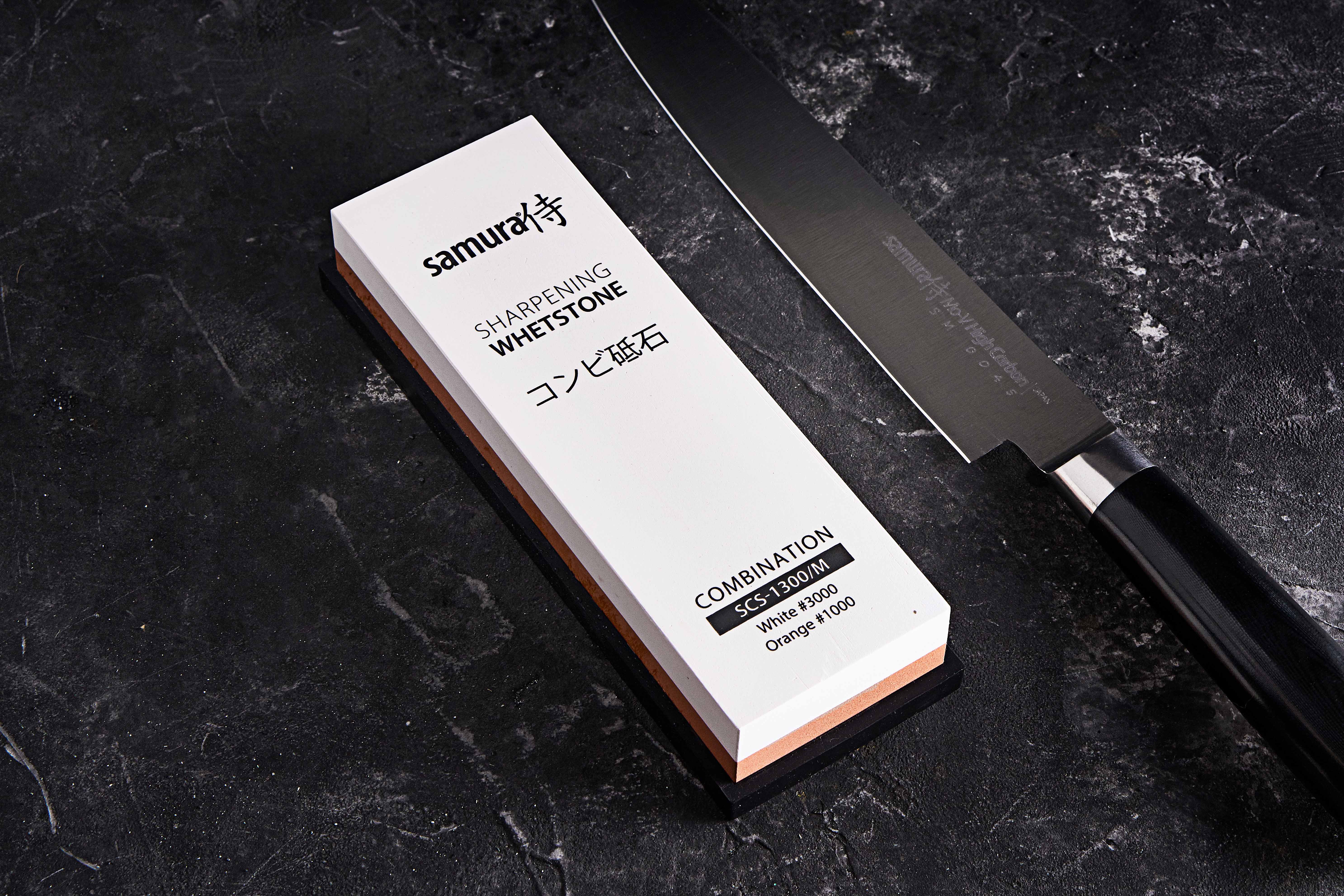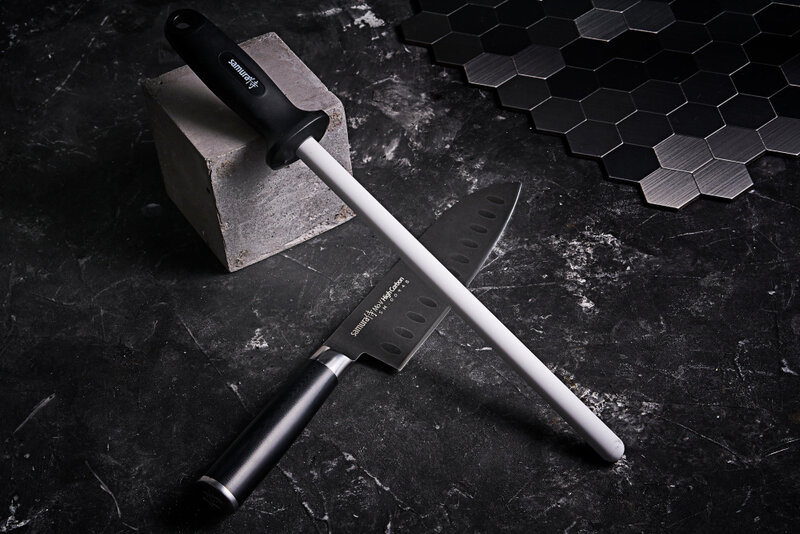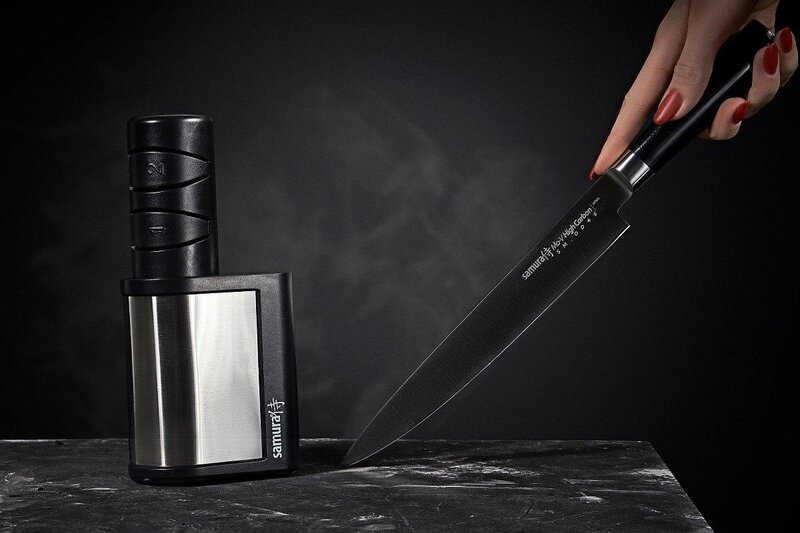
How to Sharpen Japanese Kitchen Knives Properly

Japanese kitchen knives are distinguished by their high steel hardness and thin cutting edge. This makes them incredibly sharp, but also requires a special approach to sharpening. European models can be processed with universal sharpeners, but special water stones or alternative methods are used for Japanese blades. Let's look at all the available sharpening methods and their features.
Ways to sharpen Japanese knives
There are several methods for sharpening Japanese knives, each of which has its own advantages and is suitable for certain conditions:
- Sharpening on water stones (traditional method) – allows you to achieve the sharpest and most durable result.
- Using a steel (edging the cutting edge) – helps maintain sharpness during use.
- Mechanical and electric sharpeners – are suitable for quick sharpening, but may not give such a fine result.
Let's look at each method in more detail.
Sharpening on water stones
Choosing a whetstone

Only water stones (toishi) are used to sharpen Japanese knives, as they minimize metal removal and extend the life of the blade. The main parameters when choosing a sharpening stone:
- Grit:
- 400–700 grit — to eliminate severe damage (chips, nicks).
- 1000–2000 grit — basic sharpening to restore sharpness.
- 3000–8000 grit — final sharpening and polishing.
- Hardness: Hard stones wear out more slowly and provide an even sharpening.
- Size: The length of the whetstone should be no less than the length of the blade.
Before sharpening, the stone is soaked in water for 5-30 minutes depending on the grain size.
Stages of sharpening on water stones
Preparation
- Soak the stone in water.
- Clean the blade from grease and dirt.
- Secure the stone on a stable surface.
Rough sharpening (if any) damage)
- Use a 400-700 grit stone.
- Move the blade away from you, maintaining the sharpening angle (usually 10-15 degrees).
- Work in sections, distributing the force evenly.
- Remove the burr by turning the knife over and making several light strokes on the stone.
Basic Sharpening
-
Use a 1000-2000 grit stone.
-
Repeat the movements, making sure to maintain the angle.
-
Check the sharpness by cutting a piece of paper.
Finishing
-
Use a 3000-8000 grit stone.
-
Use light strokes to give the blade its final sharpness.
Sharpening the edge with a steel

A steel is a tool for regularly maintaining the sharpness of a knife. It does not sharpen, but straightens the blade, eliminating microscopic deformations. This method is recommended to be used daily or after several uses of the knife to maintain its cutting properties longer.
How to choose a steel
-
Material:
-
A steel steel is suitable for knives with soft steel, but is not recommended for hard Japanese blades.
-
A ceramic steel is the best option for Japanese knives, as it gently sharpens the cutting edge.
-
A diamond steel is effective, but can be too aggressive on a thin blade.
-
-
Shape: A round or oval steel distributes the load on the edge better.
-
Length: Should be at least 1.5 times longer than the length of the knife.
How to use a steel
-
Choosing a position:
-
Vertical method: rest the base of the steel on the cutting board.
-
Horizontal method: hold the steel in the air, resting it on the edge of the table.
-
-
Determine sharpening angle
-
For Japanese knives, the angle should be 10-15 degrees.
-
For European knives, you can use an angle of 20 degrees.
-
-
Sharpening the blade:
-
Run the knife along the steel from the heel (base) to the tip of the blade.
-
Alternate sides, making 5-10 smooth movements on each.
-
At the beginning, you can apply light pressure, then ease it towards the end of the process.
-
-
Checking the result:
-
Check the sharpness of the knife by cutting a sheet of paper.
-
If the edge needs additional sharpening, repeat the procedure.
-
When to use a steel
-
Daily sharpening helps to avoid frequent sharpening on stones.
-
After cutting hard products, to return the knife to its original sharpness.
-
If the knife has begun to lose the smoothness of the cut, but does not yet require full sharpening.
Mechanical and electric sharpeners

This method is good for quickly restoring sharpness, but requires caution as it may remove more metal than necessary.
Using a mechanical sharpener:
-
Set the sharpener on a flat surface.
-
Insert the knife into the slot according to the manufacturer's instructions.
-
Run the blade several times with moderate pressure.
Using an electric sharpener:
-
Turn on the electric kitchen knife sharpener and select the desired mode.
-
Slowly slide the knife through the guides.
-
Repeat the procedure several times until you get the desired result.
Common Sharpening Mistakes
-
Using universal knife sharpeners - they are not suitable for Japanese knives and can damage the edge.
-
Too much pressure - leads to uneven metal removal.
-
Violation of the sharpening angle - the blade quickly becomes dull.
-
Refusing the final polishing - reduces the durability of sharpness.
Conclusion
Sharpening Japanese kitchen knives requires a careful approach, the right tools and careful technique. There are several methods - from traditional sharpening on water stones to using mechanical sharpeners. The choice of method depends on your skills and goals. Regular use of a steel and timely sharpening will help maintain the perfect sharpness of the knife for many years.
Other articles

